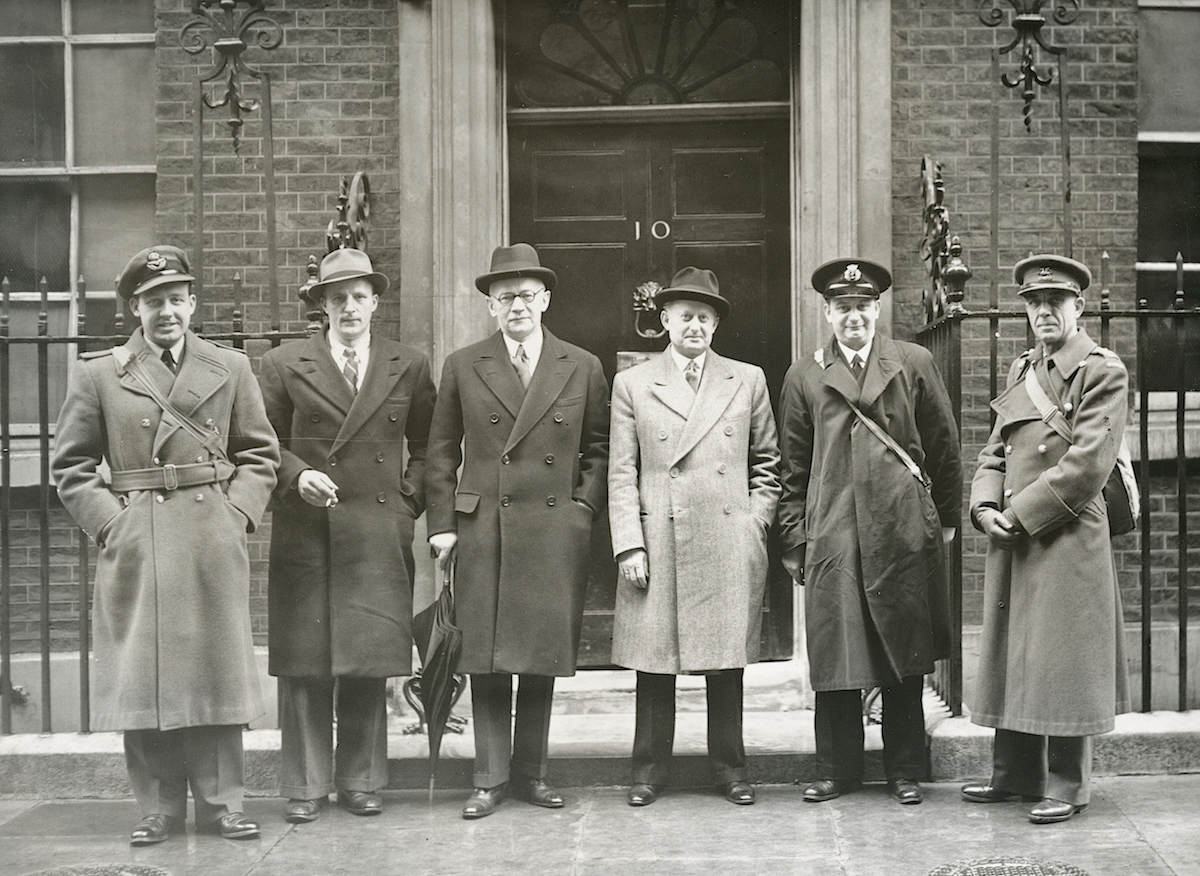10 Downing Street
Article
In October 1941, a Spitfire Fund was set up to collect funds for a number of Danish Spitfires. The result of the collection was presented to Prime Minister Winston Churchill in 10 Downing Street on 9 April 1942.
On 9 April 1942—the second anniversary of the German occupation of Denmark—a delegation from the Danish Council presented a check of £38,300 to Prime Minister Winston Churchill at 10 Downing Street.
The Danish Council had been formed on 30 September 1940 to unite the Danish exile community in United Kingdom. In the summer of 1941, representatives from the Danish Council had travelled North and South America to visit Danish communities on that continent. At this stage of the war, the first Norwegian fighter squadron, 331 Squadron, had been formed. Even earlier Belgian, Dutch, Polish, and Czech pilots were flying in national units under RAF control. French and Greek pilots were soon added to the list. The Danish Council dreamed of a Danish squadron. Consequently, a number of Danish fighter funds were set up in both North and South America, aiming at collecting £65,000 or enough funds for at least twelve Spitfires.[1]

The Danish collection did not meet expectations, however, and at the last meeting of the Fighter Fund Committee on 26 March 1942, the donations had totalled £35,574. Even if, eventually, the sum increased to a total of £40,972 or enough money to fund eight Spitfires, the dream was far fom realised.[2]
The Donation
At the beginning of March 1942, a member of the Fighter Fund Committee, Mr. Max Jensen, who was a personal friend of Lord Leathers, the Minister of War Transport, had approached him to ask the Prime Minister would accept the Danish donation in person. The Foreign Office supported the initiative stating that the presence of the Prime Minister.
…would give great pleasure and encouragement to the Danes, who have really done very well in collecting this substantial sum. The Danes are making a considerable contribution to the Allied cause. […] In this country the Danes are co-operating actively in the war effort. The most important contribution is that of the 3-4,000 Danish seamen, but there is also a small contingent of Danes in the “Buffs”, and some volunteers in the R.A.F., recruiting being encouraged by the Danish Council.(NA: FO 371/32430)
The Prime Minister accepted. On 9 April 1942, the result of the collection was presented to Prime Minister Winston Churchill at No. 10 Downing Street. The delegation consisted of representatives of the Danish Council in London, including Captain Werner Michael Iversen and Plt Off. Jørgen Thalbitzer. On this occasion, the Prime Minister said,
We shall never pause in our struggle, nor will our great American and Russian allies, and I have very little doubt that the day will come—perhaps sooner than it would be prudent or sensible to hope—when Denmark will be free from the grip in which she has been held, and when she will resume her independent, honoured, and ancient place among the free peoples and States of Europe. […] We never have forgotten those days, nor have we forgotten the longer days in the past when our armies served together. We shall do our utmost to repay your country with good results. Good weather is needed to turn this splendid cheque for £38,000 into the first heavy thunder drops of the storm which has to beat upon this odious tyranny.Churchill, 1946
The event was widely reported not only in the Danish newspaper in London, Frit Danmark, but also in newspapers around the world.[3]
The next day, the first three Spitfires were presented to the Royal Air Force and No. 234 (Madras Presidency) Squadron at a ceremony at RAF Station Ibsley. Present at Ibsley were also notable members of the Danish community.[4]
Endnotes
[1] Plannthin, M. Danish Spitfires at War, The Tangmere logbook: Magazine of the Tangmere Military Aviation Museum (2017), p. 14-21.
[2] NA: AVIA 15/3725.
[3] Frit Danmark.
[4] La Cour, W. Danmark under besaettelsen, (1946).